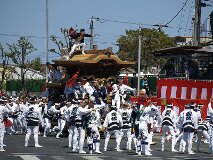
There are five vowels in Kansai-ben: あ, い, う, え, and お--the same as standard Japanese. According to Yamashita (2004) 1, Kansai-ben is an easy to understand dialect for Japanese learners because people tend to pronounce vowels more clearly.
To take a single case, unlike standard Japanese where [i] and [u] sound are often devoiced, devoicing? these vowels rarely occurs in Kansai-ben. For example, in standard Japanese 聞く is usually pronounced [k(i)ku], 行きますか [(i)kimasuka], and です [des(u)]. However, in Kansai-ben, people clearly pronounce these [i] and [u] sounds.
Another case is the pronunciation of う. In Kansai, people round their lips more than they do in standard Japanese. This has the effect of making the sound more clear.
Besides the above two examples, there are three broad characteristics of Kansai-ben vowels: palatalization, vowel extension, and the dropping of "う".
- 1. Yamashita, Y. (2004) Kansai-ben Koogi, Tokyo: Kodansha

